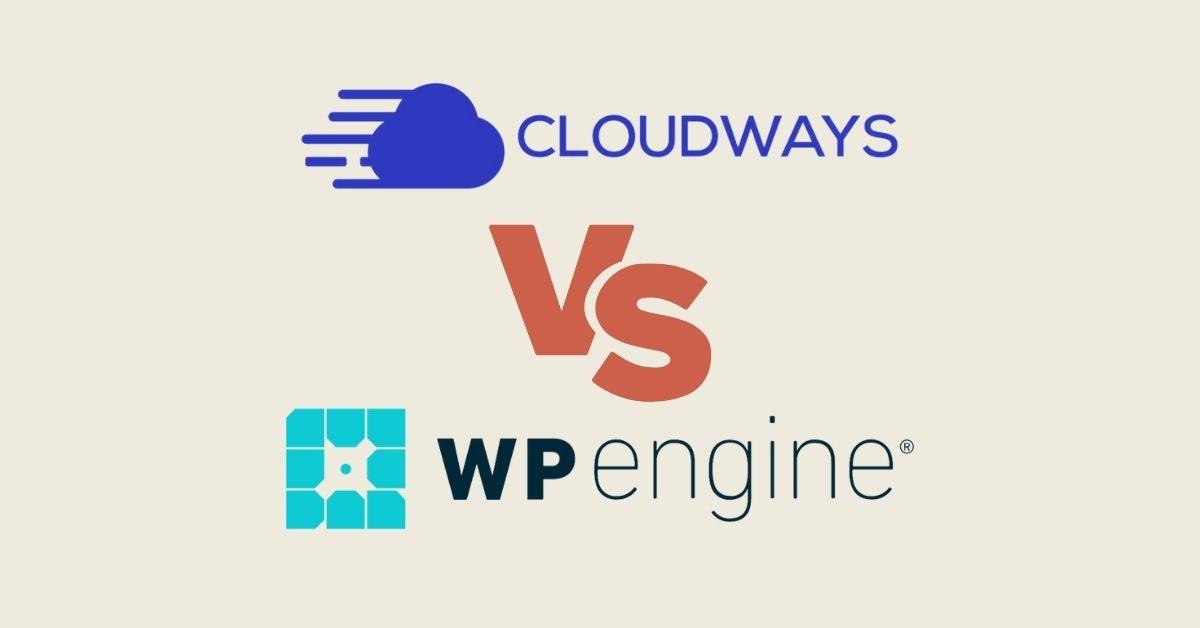The vast world of WordPress is like a canvas waiting for you to paint your masterpiece.
The beauty of WordPress lies in its flexibility and endless possibilities, allowing developers or business owners to craft a website that truly represents their vision.
However, tapping into the full potential of WordPress requires a few tricks of the trade.
That's where our comprehensive checklist comes in.
From seasoned professionals to curious newcomers, everyone can benefit from these insights.
So, without further ado, let's dive into WordPress Customization.
WordPress Customization: 17 Expert Tips
When it comes to creating a website that stands out from the crowd, custom WordPress development is your best bet.
It's not just about installing a theme and adding some plugins; it's about crafting a unique user experience.
Here are tips that can skyrocket your WordPress skills to the next level.
Tip 1: Master the Basics First
Before diving deep into customization:
- Ensure you have a solid understanding of WordPress fundamentals.
- Familiarize yourself with the dashboard, know-how themes work, and get comfortable with basic plugins.
- Remember, you can only build a skyscraper with a strong foundation.
- Try new plugins or themes. It will give you the confidence to touch your website without worries.
- Learn to use WordPress in a local environment. Plenty of youtube tutorials can help with that.
Tip 2: Always Opt for Child Themes

Why reinvent the wheel when you can modify it?
Child themes allow you to make changes without altering the original theme, ensuring that your customizations remain intact even after updates.
It's a lifesaver for those who like to tinker.
In the simplest of terms, a child theme is a sub-theme that inherits all the functionality, features, and styles of its parent theme.
Think of it as a safety net, allowing you to make changes and tweaks without affecting the original theme.
- Safety First: By working on a child theme, you ensure the main (parent) theme remains untouched. The original theme remains unaffected if you make a coding error or a change that breaks your site.
- Easy Updates: It allows updating parent themes without losing customizations.
- Faster Development: Child themes are a safe testing ground for developers to experiment with different features and speed up development.
- Reusable Components: If you develop specific functionality in one project, child themes allow you to easily replicate that in another without starting from scratch.
Tip 3: Make your Website Responsive
In today's fast-paced world, people browse from various devices.
Ensure your site looks flawless on a desktop, tablet, or mobile.
Use responsive themes and test your site across different devices.
- Audience Reach: Responsive design is crucial for accommodating users on multiple devices.
- UX: A poorly designed mobile site can frustrate users and lead to traffic loss. Responsive design ensures a consistent user experience.
- Better SEO Ranking: Google and other search engines prioritize mobile-friendly sites. A responsive design can boost your site's ranking, increasing visibility and organic traffic.
Tip 4: Improve Website Speed

Nobody likes a sluggish site.
Optimize images, leverage browser caching, and minimize redirects.
Use plugins like WP Super Cache, W3 Total Cache, or WP-Rocket to boost your site.
- User Experience: Online users expect fast and smooth browsing. A slow-loading website can cause visitors to leave before the content loads.
- SEO Rankings: Search engines like Google consider page speed a ranking factor. Quicker sites usually rank higher, leading to more visibility and organic traffic.
- Conversion Rates: Studies have shown a direct correlation between loading times and conversion rates. A timely page load can lead to a drop in conversions and sales.
Tip 5: Increase Security
With cyber threats lurking around every corner, secure your website using plugins like Wordfence or iThemes Security.
Regular backups, strong passwords, and two-factor authentication are also a must.
- User Trust: Visitors trust your platform with their data, from email addresses to payment details. A secure website is a testament to respecting that trust.
- Reputation Management: A single security breach can tarnish your brand's reputation, possibly leading to a loss in clientele and revenues.
- Preventing Financial Loss: Cyberattacks can result in direct financial losses, from stolen funds to potential legal implications.
Tip 6: SEO - Your Best Friend

Optimizing your site for search engines is crucial.
Use SEO-friendly themes, permalinks, and plugins like Yoast SEO or Rank Math.
Remember, a well-optimized site drives more organic traffic.
- Visibility: A higher ranking on search engines translates to more visibility, which can lead to increased organic traffic.
- Credibility: Sites on the first page of search engine results are often perceived as more credible and authoritative.
- Cost-Effective Marketing: Unlike paid ads, the organic traffic generated through SEO costs nothing, making it a sustainable and cost-effective marketing strategy.
Take a look at our WordPress SEO checklist, and rank higher in search engines.
Tip 7: Customize Your Login Page
Your login page is your website's gateway.
Instead of the generic WordPress login, customize it to reflect your brand.
Plugins like Custom Login Page Customizer can help.
- Branding Consistency: A customized login page aligns with the overall branding of your site, providing a cohesive user experience from the start.
- Professional Appeal: A tailored login page shows professionalism, showcasing attention to detail.
- Security: Customizing the login page can be a subtle security measure, making it less recognizable to automated bots.
Tip 8: Use Custom Post Types

Not everything is a post or a page.
Custom post types (CPT) allow you to create distinct content like portfolios, testimonials, and more.
You can use plugins like Metabox, Advance Custom fields, or Toolset.
It's a game-changer for content-rich sites.
- Specialized Content: Unlike the generic 'post' or 'page,' CPTs are designed for specific content, making organization and presentation more streamlined.
- Flexibility: With CPTs, the sky's truly the limit. You can create virtually any content tailored to your needs, from movie reviews to event listings.
Tip 9: Organize Your Media Library

With numerous images, videos, and files, things can get messy.
Organize your media library using folders and naming conventions.
Use plugins like HappyFiles.
Trust us; your future self will thank you.
- Efficiency: With an organized library, finding the right media becomes a matter of seconds rather than minutes.
- Optimized Storage: You ensure efficient use of your server space by eliminating duplicates and unwanted files.
Tip 10: Experiment with Gutenberg Blocks
The Gutenberg editor is WordPress's great feature on the block.
It offers a block-based approach to content creation.
Familiarize yourself with its potential and enhance your content game.
- Block-based Design: Content is treated as individual blocks, allowing precise layout control and design customization for paragraphs, images, and videos.
- Flexibility: With numerous blocks available, Gutenberg supports many content types, from simple text to complex layouts.
Tip 11: Backup! Backup! Backup!

Nothing's worse than losing all your hard work.
Regularly back up your website using plugins like UpdraftPlus.
It's your safety net against the unexpected.
- Peace of Mind: Knowing that your website's latest version is safely stored offers immense peace of mind. Sleep easy, knowing you're prepared for any digital hiccup.
- Protection from Threats: Cyber threats like malware attacks and hacking attempts are everywhere. While firewalls and security plugins are important, having a backup plan provides a fallback option.
- Mitigating Human Error: It's not just external threats; sometimes, we're our enemies. A wrong click, an incompatible update, or accidental deletions can wreak havoc.
Tip 12: Connect with the Community
The WordPress community is vast and supportive.
Join forums, attend WordCamps, and follow influential WordPress personalities.
Networking can open doors to uncharted territories.
- Shared Knowledge: No one person has all the answers. By engaging with the community, you tap into a collective knowledge base that's seen it all, done it all.
- Problem-Solving: Facing a pesky bug or a tricky coding challenge? Someone out there has probably faced it too – and solved it.
- Staying Updated: WordPress, being a dynamic platform, evolves continuously. The community is often the first to know about updates, new features, or emerging trends.
Tip 13: Embrace Page Builders

For those who aren't code-savvy but want a tailored experience, page builders like Elementor or Divi can be your holy grail.
They offer drag-and-drop functionalities, allowing you to design pages with ease.
- No Coding Skills Required: The drag-and-drop interfaces of page builders have made it a breeze for anyone to design professional-looking websites, irrespective of their coding prowess.
- Flexibility and Customization: With an array of widgets, templates, and design elements, you can customize pages to your heart's content.
- Time-Efficient: Designing from scratch can be time-consuming. With their pre-designed templates and sections, page builders significantly cut down the development time.
Tip 14: Keep an Eye on Analytics
What's a website without visitors?
Integrate tools like Google Analytics and Google Search Console to gain insights into user behavior and tailor your content and design accordingly.
- User Behavior: Understand what content resonates with your audience, where they spend the most time, and where they drop off.
- Traffic Sources: Identity which marketing efforts are bearing fruit, be it organic search, social media, or paid campaigns.
- Optimize for Conversions: By monitoring user paths and conversions, you can refine your website's flow to boost goal completions.
- Technical Insights: Detect issues like 404 errors, slow-loading pages, or device compatibility problems.
Tip 15: Implement Multilingual

Expand your reach by making your website accessible to non-English speakers.
Plugins like WPML can help you create a multilingual platform.
- Wider Audience Reach: Reach non-English speaking users who represent a significant portion of the internet user base.
- Enhance User Experience: Localized content can make users feel at home and increase trustworthiness.
- Competitive Edge: Stand out in the market, especially if competitors aren't offering multilingual options.
Tip 16: Manage User Roles Effectively
Define clear roles for those who have access to your WordPress dashboard.
It ensures that contributors have the right permissions, safeguarding your site's integrity.
- Administrator: With full access to features and functionalities, they can make critical changes, including plugins, themes, and user management.
- Editor: They can publish, edit, or delete any posts, including those written by others.
- Author: Authors can write, edit, and publish their articles.
- Contributor: They can write and manage their posts but can't publish them.
- Subscriber: The most limited role; subscribers can manage their profile and read posts.
Tip 17: Don't Neglect the 404 Page

Users landing on a 404 page are already facing disappointment.
Customize this page to guide them to relevant content or add a touch of humor to lighten the mood.
- User Retention: A generic 404 page can frustrate users, increasing their likelihood of leaving your site. A custom 404 can guide them back to relevant content.
- Branding Opportunity: A creatively designed 404 page can reinforce your brand and showcase its personality.
Conclusion
Blending foundational principles with advanced techniques enables you to craft a website that meets and exceeds expectations.
Hopefully, these tips will guide you toward achieving WordPress customization smartly.
You can approach us anytime if you want us to handle your WordPress website development.
FAQs






